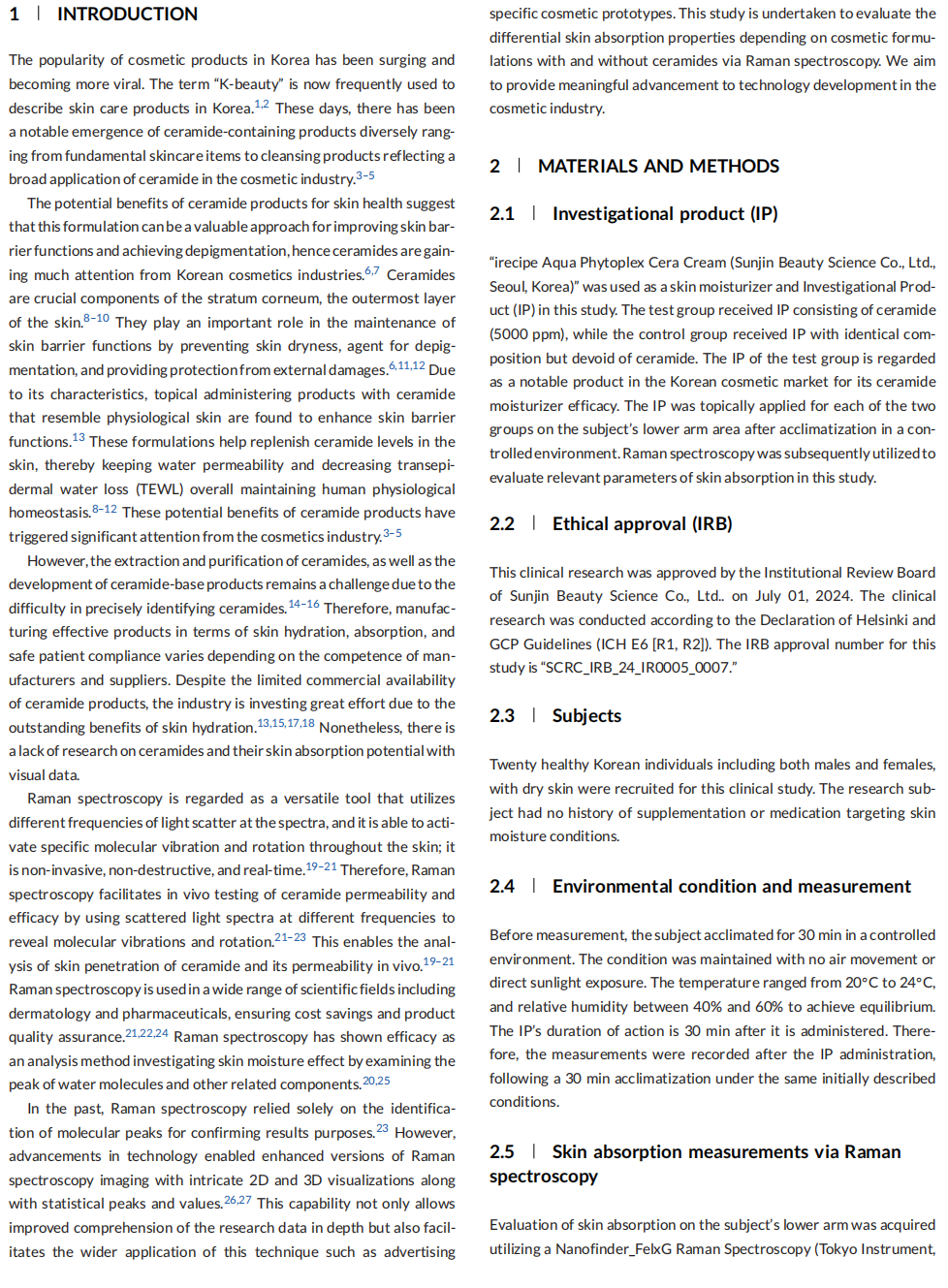
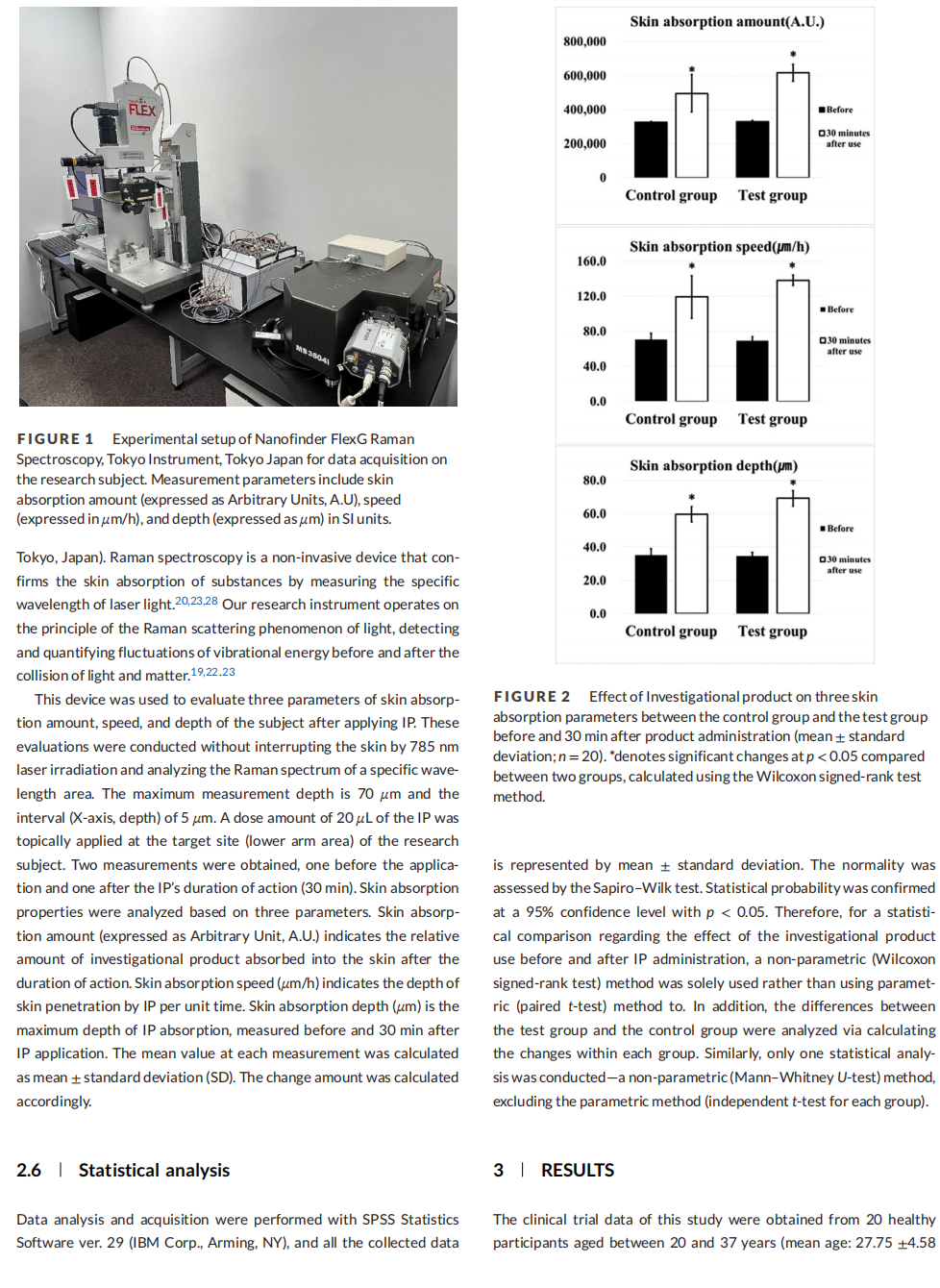
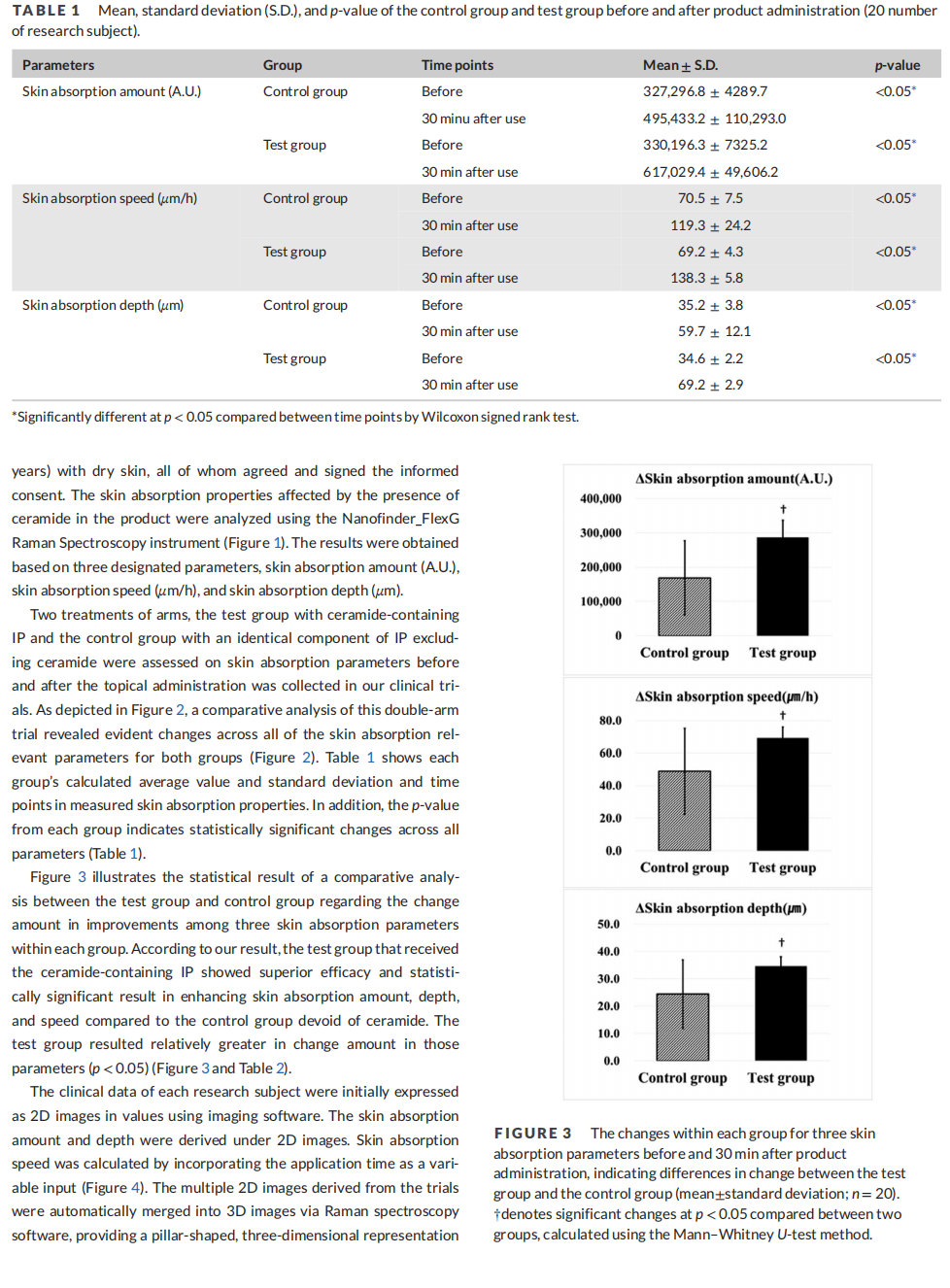
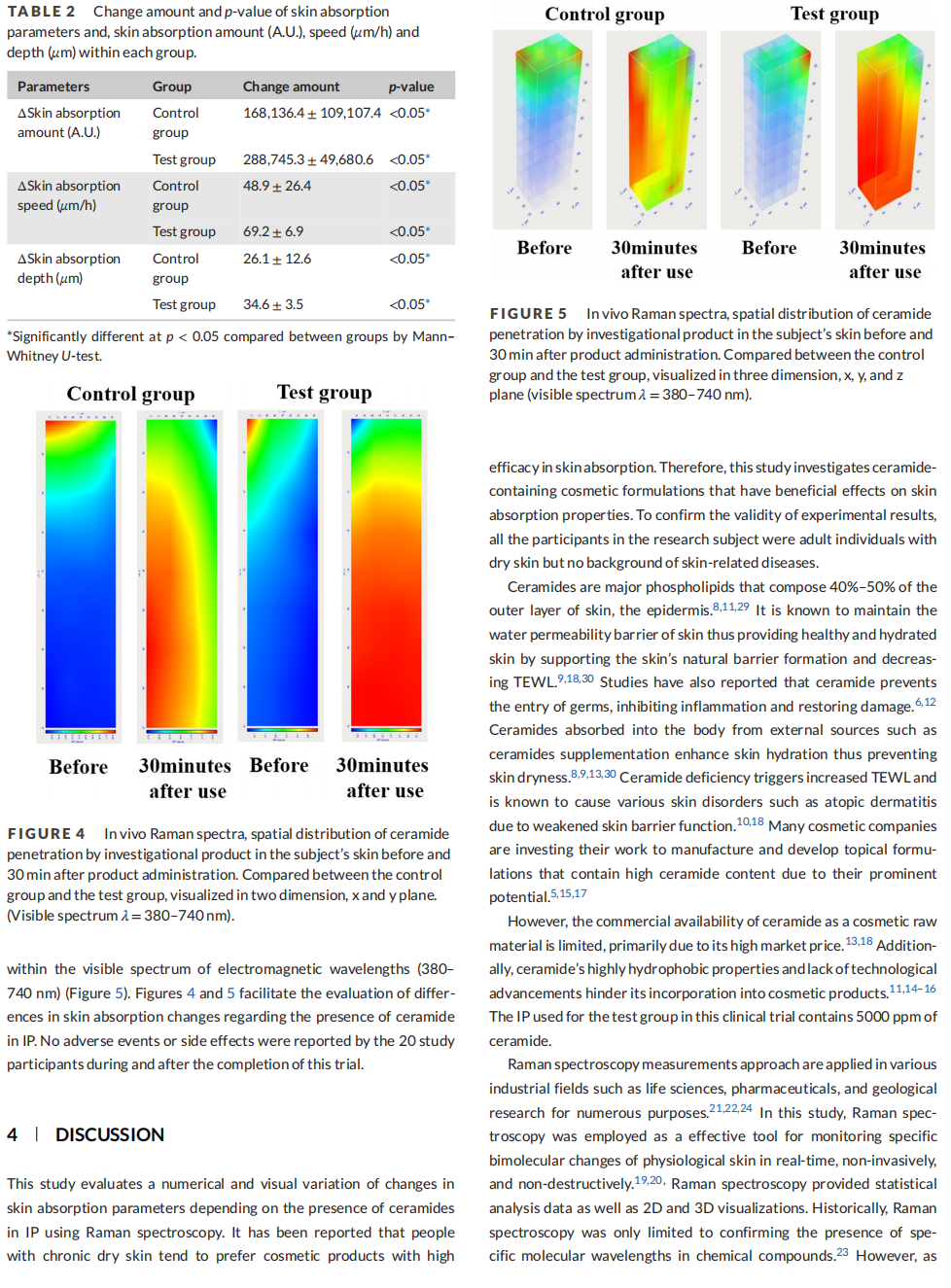
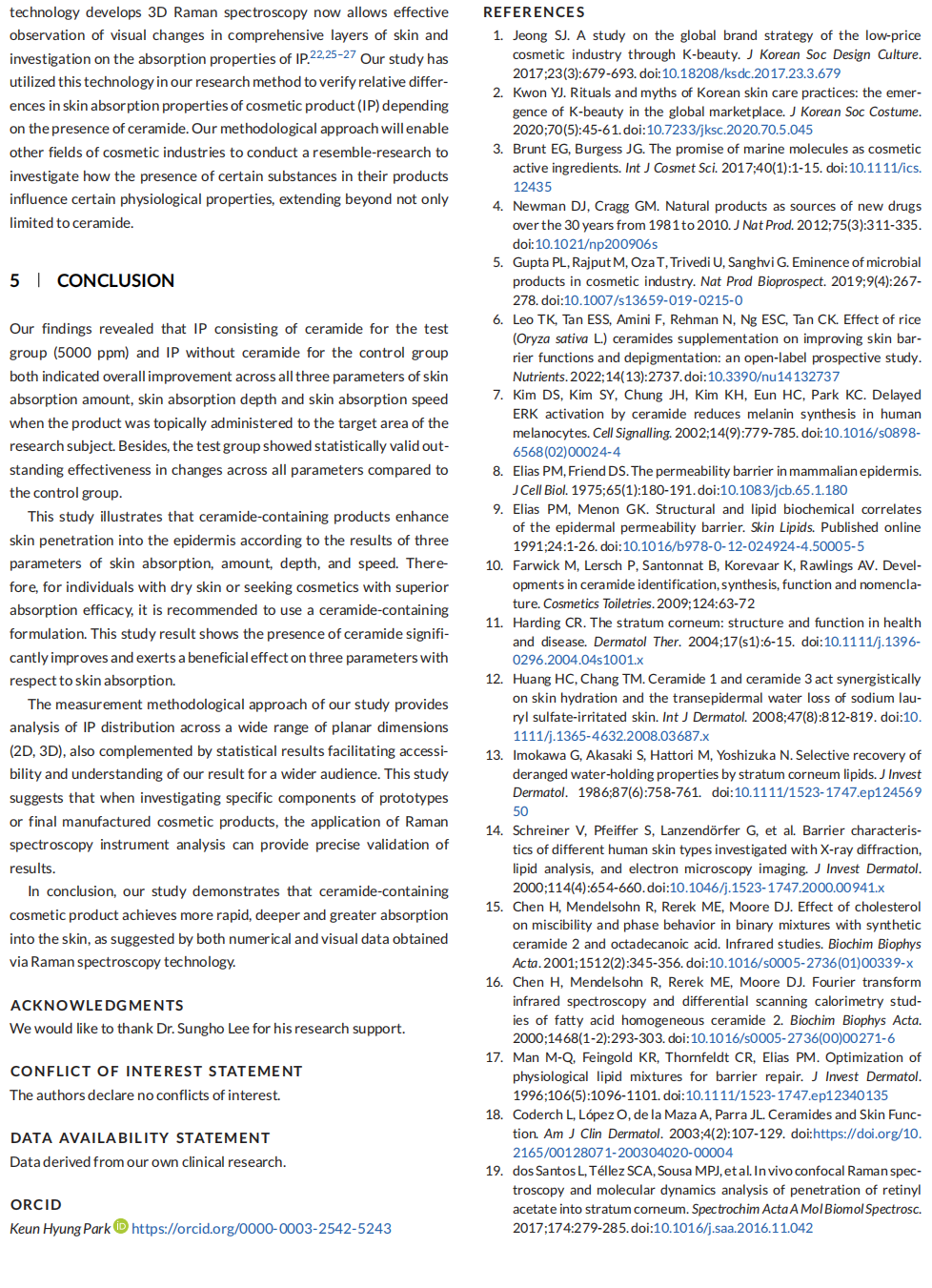
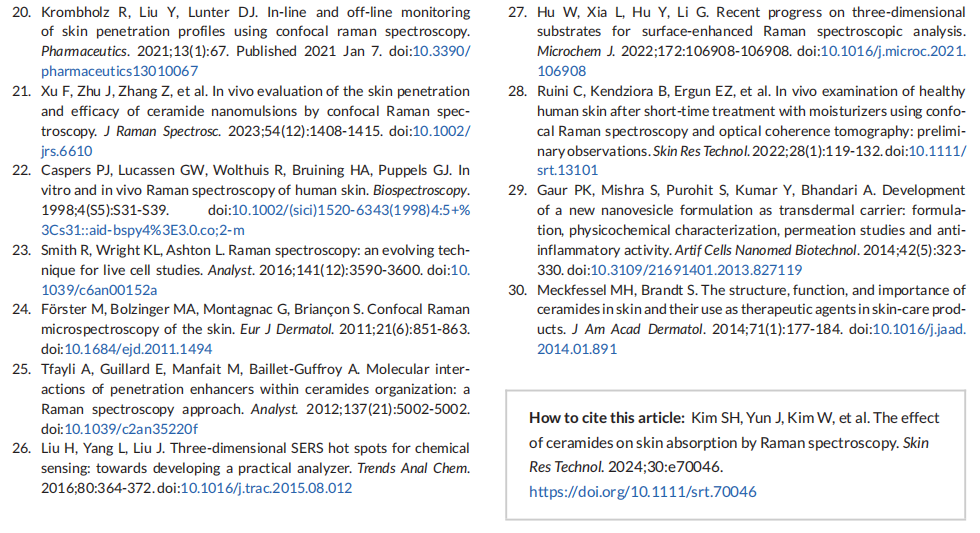
This article is excerpted from the Skin Res Technol. 2024;30:e70046 by Wound World.
Song Hee Kim1 Jeonghoon Yun1,2 Woncheol Kim1 Eunsu Seon1 Chanhwi Lee1 Jaejoon Jeon1 Mid Eum Yun3 Keun Hyung Park1,3
1 Sunjin Clinical Research Center, Sunjin Beauty Science Co., Ltd., Seoul, South Korea
2 Faculty of Life Sciences, University of Toronto, Toronto, Ontario, Canada
3 R&D Center, Sunjin Beauty Science Co., Ltd., Seoul, South Korea
Correspondence
Keun Hyung Park (Director, Ph.D), Sunjin Clinical Research Center, Sunjin Beauty Science Co., Ltd., 8F, Gasan Hanwha Bizmetro, 43-14, Gasandigital 2-ro, Geumcheon-gu, Seoul, South Korea.
Email: 该Email地址已收到反垃圾邮件插件保护。要显示它您需要在浏览器中启用JavaScript。
This is an open access article under the terms of the Creative Commons Attribution-NonCommercial-NoDerivs License, which permits use and distribution in any medium, provided the original work is properly cited, the use is non-commercial and no modifications or adaptations are made.
© 2024 The Author(s). Skin Research and Technology published by John Wiley & Sons Ltd.
Abstract
Introduction: Ceramides are essential epidermal constituents that play a critical role in skin moisturization treatment as a raw material in cosmetics formulation. Recently, ceramides have been known to be frequently applied in various cosmetic formulations. Despite ceramide’s beneficial characteristics, academic research regarding ceramides and their skin absorption remains insufficient. Therefore, our study conducted clinical research employing Raman spectroscopy to investigate the effects of ceramides on skin absorption to enhance the understanding of ceramides’ dermatological functionality and their topical application in cosmetics science.
Materials and Methods: Twenty healthy individuals with dry skin have participated in this clinical trial. In this double-arm designed trial, the test group received an investigational product with ceramides (5000 ppm) and a control group received an investigational product without the ceramides while all other components remained identical. The subjects visited the clinical research center and acclimatized for 30 min in constant humidity and temperature for equilibrium, subsequently conducting a measurement. Before the trial, the research subject’s target site (lower arm area) was kept clean, devoid of any cosmetic administering 24 h before the trial when investigational product was topically applied.
Results: Our findings with Raman spectroscopy statistically demonstrate that skin absorption amount, speed and depth for both groups improved overall (p < 0.05) after administration of the investigational product. Notably, the test group received an investigational product with ceramides (5000 ppm) indicating superior effectiveness across all parameters compared to a control group from comparison analysis of each parameter (p < 0.05).
Conclusion: This study concludes that ceramide-containing cosmetics provide a beneficial effect on skin absorption via visual and statistical results of Raman spectroscopy
KEYWORDS
ceramides, cosmetic, Raman spectroscopy, skin absorption, skin clinical research






This article is excerpted from the Skin Res Technol. 2024;30:e70046 by Wound World.
